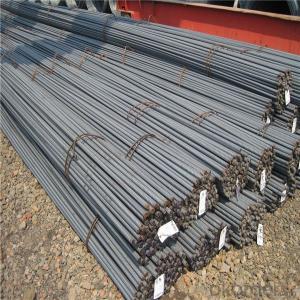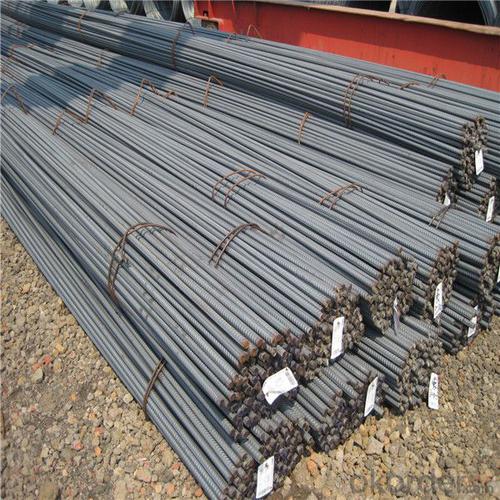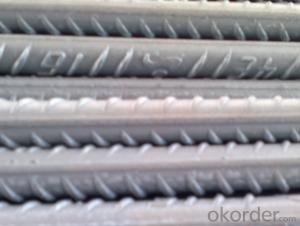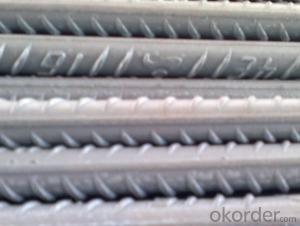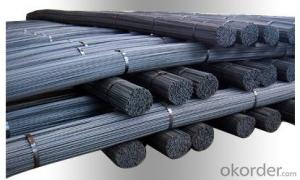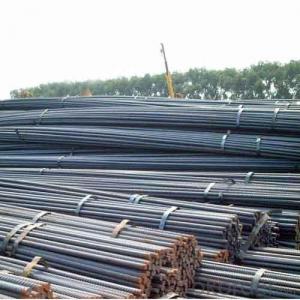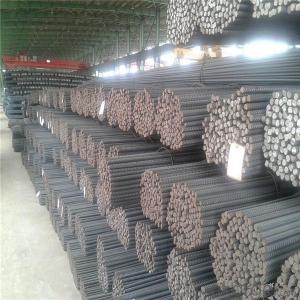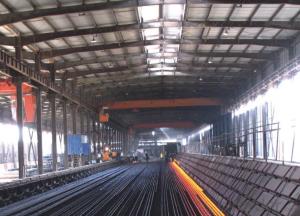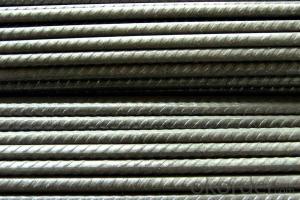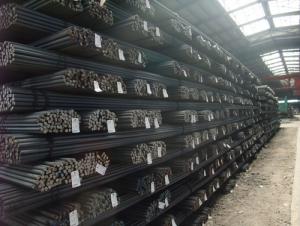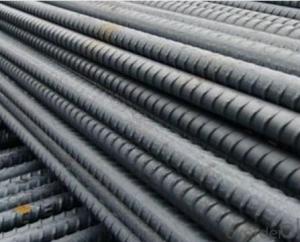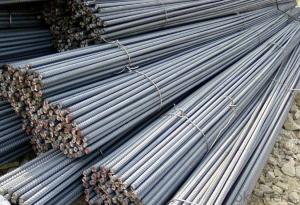Hot rolled Reinforcing Steel rebar 6-12m
- Loading Port:
- China main port
- Payment Terms:
- TT OR LC
- Min Order Qty:
- 1000 m.t.
- Supply Capability:
- 17497 m.t./month
OKorder Service Pledge
OKorder Financial Service
You Might Also Like
Specification
Rebar has ridges that bind it mechanically to the concrete with friction, it can still be pulled out of the concrete
under high stresses, an occurrence that often precedes a larger-scale collapse of the structure. To prevent such
a failure, rebar is either deeply embedded into adjacent structural members, or bent and hooked at the ends to lock
it around the concrete and other rebars. This first approach increases the friction locking the bar into place while the
second makes use of the high compressive strength of concrete.
Product Description :
Chemical composition (%): | Steel | C | Si | Mn | P | S | Ceq | ||||
HRB335 |
0.25 |
0.80 |
1.60 |
0.045 |
0.045 | 0.52 | |||||
HRB400 | 0.54 | ||||||||||
HRB500 | 0.55 | ||||||||||
Mechanical properties | Steel | Rel/ MPa | Rm/ MPa | A/ % | Agt/ % | ||||||
≥ | |||||||||||
HRB335 | 335 | 455 | 17 |
7.5 | |||||||
HRB400 | 400 | 540 | 16 | ||||||||
HRB500 | 500 | 630 | 15 | ||||||||
Package: | Standard export packing or as customer's request | ||||||||||
Application: | Construction, building, bridge, road. ect | ||||||||||
Payment terms | 1).100% irrevocable L/C at sight. | ||||||||||
Delivery time | 15-30 days after receipt of L/C or deposit by T/T | ||||||||||

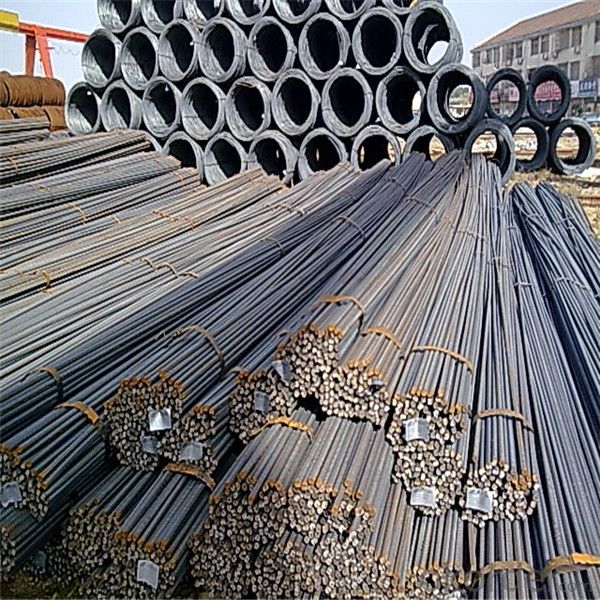
Features
1、Pure steel quality, stable chemical contents, small tolerance.
2、Constant Quality, good drawing performance.
3、High dimension accuracy degree, accuracy degree of Level C up to 80%, smooth surface, less scale, easy to be pickled.
4、Automatic bundling with 4 lines by Machine in tidy and good looks
5、Big high quality percentage, small coil percentage, and heavy coil weight for Hard Coil.
6、High sorbitizing percentage.
Packing:
In bundles, each bundle weight 3.5 tons. Load by container or by bulk verssel.
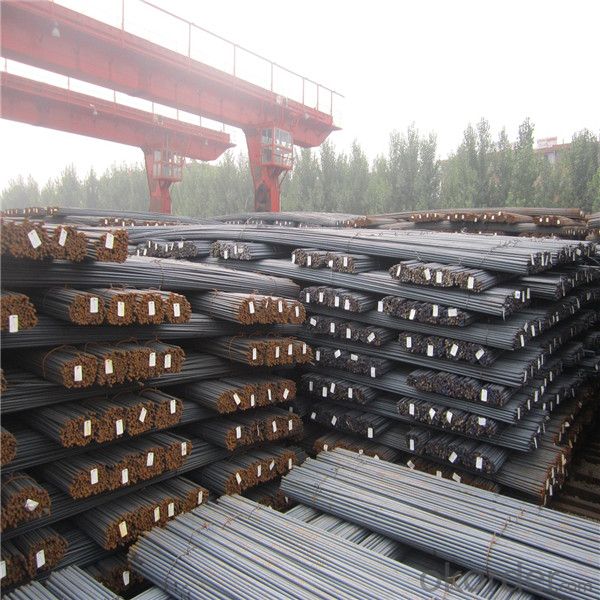
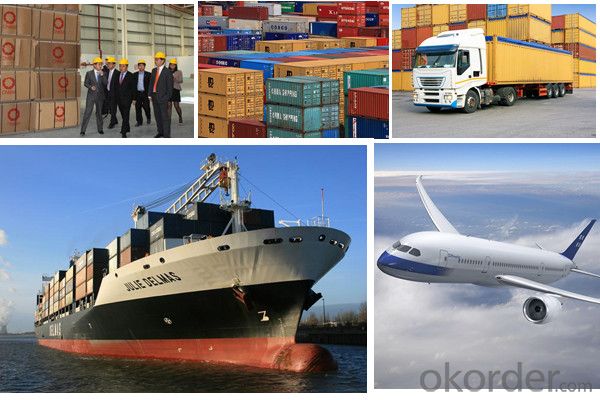
FAQ:
1.Q: What's your MOQ(minimum order quantity)?
A: One full container, mixed acceptable .
2. Q: What's your packing methods?
A: Packed in bundle or bulk ..
3. Q: How can I buy CNBM products in my country?
A:Please send us an inquiry or email ,we will reply to you if there is distributor in your country
4. Q: Can we visit your factory?
A: Warmly welcome. Once we have your schedule, we will arrange the professional sales team to follow up your case.
5. Q: How long does it take to get the product if i place an order?
A:With the process of your requirements,we will pack and deliver in 3-7 days. If it is by sea shipment,it will take 15-45 days depending on different locations
- Q: Can steel rebars be used in structures with high resistance to fire?
- Yes, steel rebars can be used in structures with high resistance to fire. Steel has a high melting point and excellent fire resistance properties, making it a suitable choice for reinforcing structures that need to withstand high temperatures and fire hazards.
- Q: Can steel rebars be used in the construction of museums and cultural centers?
- Yes, steel rebars can be used in the construction of museums and cultural centers. Steel rebars provide strength and durability, making them suitable for reinforcing concrete structures.
- Q: What are the different types of surface finishes available for steel rebars?
- Some of the different types of surface finishes available for steel rebars include black or plain, epoxy-coated, galvanized, and stainless steel.
- Q: What are the different types of surface finishes available for steel rebars?
- Some of the different types of surface finishes available for steel rebars include black or plain, epoxy-coated, galvanized, and stainless steel.
- Q: Can steel rebars be used in cold weather conditions?
- Cold weather conditions allow for the use of steel rebars. Steel is renowned for its durability and strength, rendering it a viable material for construction endeavors in frigid climates. Nevertheless, when employing steel rebars in cold weather, it is imperative to exercise certain precautions. For instance, it is vital to ensure that the rebars are stored and shielded adequately to prevent corrosion caused by moisture. Moreover, the concrete mixture utilized in conjunction with the rebars must be modified to withstand freezing temperatures and avert cracking. Ultimately, with meticulous planning and adherence to precautions, steel rebars can be employed effectively in cold weather conditions.
- Q: Can steel rebars be used in structures with high noise reduction requirements?
- No, steel rebars alone cannot provide sufficient noise reduction in structures. While steel rebars are commonly used for reinforcement in construction, they are primarily used for structural strength rather than noise reduction. To meet high noise reduction requirements, additional soundproofing materials or techniques such as acoustic insulation, double-glazed windows, or sound-absorbing panels should be incorporated into the structure.
- Q: What is the recommended method for splicing steel rebars together?
- The recommended method for splicing steel rebars together is typically achieved using mechanical splices or lap splices. Mechanical splices involve connecting two rebars using couplers or sleeves, which are designed to provide strength and stability to the joint. Lap splices, on the other hand, involve overlapping the rebars and securing them together with steel wire or tie bars. The choice of method depends on factors such as the structural requirements, rebar diameter, and construction specifications.
- Q: Are steel rebars suitable for use in high-rise buildings?
- Yes, steel rebars are suitable for use in high-rise buildings. Steel rebars, also known as reinforcing bars, are commonly used in the construction industry to provide strength and stability to concrete structures. High-rise buildings require a strong and durable structural system to withstand various loads and forces such as wind, earthquakes, and the weight of the building itself. Steel rebars offer excellent tensile strength and ductility, making them ideal for reinforcing concrete in high-rise structures. One of the key advantages of steel rebars is their ability to resist tensile forces. Concrete is strong in compression but weak in tension, and steel rebars help counteract this weakness by providing the necessary tensile strength. This is crucial in high-rise buildings where the weight of the structure can cause tension on the concrete elements. By reinforcing the concrete with steel rebars, the overall structural integrity of the building is enhanced, ensuring its safety and stability. Additionally, steel rebars have superior ductility, which is the ability to deform under stress without fracturing. This property is essential in high-rise buildings as they are subject to dynamic loads and potential movements caused by factors like wind or seismic activity. Steel rebars can absorb and distribute these forces, reducing the risk of structural failure or collapse. Furthermore, steel rebars are readily available and cost-effective compared to alternative materials such as carbon fiber or fiberglass. They can be easily fabricated and installed in various shapes and sizes to fit the specific design requirements of high-rise buildings. However, it is important to note that the suitability of steel rebars in high-rise buildings also depends on proper design, installation, and regular maintenance. It is crucial to follow the relevant building codes and standards, ensure proper corrosion protection, and conduct regular inspections to detect any potential issues. By adhering to these practices, steel rebars can provide a reliable and durable reinforcement solution for high-rise buildings.
- Q: How do steel rebars impact the overall flexibility of a structure?
- Steel rebars, also referred to as reinforcing bars, play a crucial role in enhancing the overall flexibility of a structure. These bars are typically utilized in reinforced concrete structures to bolster tensile strength and enhance the structural integrity of the building. The integration of steel rebars in concrete significantly augments the flexibility of a structure. Concrete itself possesses strength in compression but weakness in tension. By incorporating rebars, the structure becomes more adept at withstanding tensile forces and resisting bending or deformation caused by external loads or environmental factors. The rebars function as reinforcement by assimilating and dispersing tensile forces throughout the structure, aiding in the prevention of cracks and ensuring a more uniform distribution of stress. This is particularly vital in regions prone to seismic activity or high wind loads, where structures must possess the ability to flex and absorb the energy exerted upon them. Furthermore, the presence of steel rebars also permits the creation of thinner and lighter concrete sections. This contributes to the overall flexibility of the structure by reducing the dead load, rendering it more responsive and adaptable to diverse conditions. In summary, steel rebars have a significant impact on the overall flexibility of a structure by furnishing tensile strength, averting cracks, distributing stress, and enabling the implementation of lighter and thinner concrete sections. By enhancing the structural integrity and resilience, the inclusion of rebars ensures that the building can withstand external forces while preserving its stability and flexibility, ultimately contributing to its longevity and safety.
- Q: What are the main properties of steel rebars?
- Steel rebars, also referred to as reinforcing bars, play a vital role in reinforced concrete structures due to their numerous advantageous characteristics. Firstly, steel rebars possess a high tensile strength, which enables them to withstand substantial pulling forces and effectively reinforce concrete to prevent cracking and structural failure. Secondly, steel rebars exhibit exceptional ductility, meaning they can deform under stress without fracturing. This flexibility allows them to absorb energy during seismic events or extreme loads, enhancing the overall performance and resilience of the reinforced concrete. Moreover, steel rebars are manufactured with a protective layer, such as epoxy or galvanized coating, to ensure corrosion resistance. This property is crucial as exposure to moisture, chloride ions, and other corrosive elements can significantly weaken the rebars and compromise the structural integrity. In addition, steel rebars can be easily welded together, facilitating efficient and effective construction. This feature enables the rebars to be connected seamlessly, forming a continuous and robust reinforcement network that enhances the overall strength and stability of the concrete structure. Furthermore, steel rebars possess thermal compatibility with concrete, meaning they have similar expansion and contraction properties. This characteristic minimizes the risk of cracking or structural damage caused by temperature changes, ensuring the long-term durability and stability of reinforced concrete structures. Lastly, steel rebars are widely available and relatively cost-effective compared to alternative reinforcing materials. This affordability, combined with their exceptional mechanical properties, makes them a popular choice for structural reinforcement in various construction projects. In conclusion, steel rebars offer high tensile strength, ductility, corrosion resistance, weldability, thermal compatibility, and cost-effectiveness. These properties are indispensable for providing structural strength and durability to reinforced concrete structures.
Send your message to us
Hot rolled Reinforcing Steel rebar 6-12m
- Loading Port:
- China main port
- Payment Terms:
- TT OR LC
- Min Order Qty:
- 1000 m.t.
- Supply Capability:
- 17497 m.t./month
OKorder Service Pledge
OKorder Financial Service
Similar products
Hot products
Hot Searches
Related keywords
